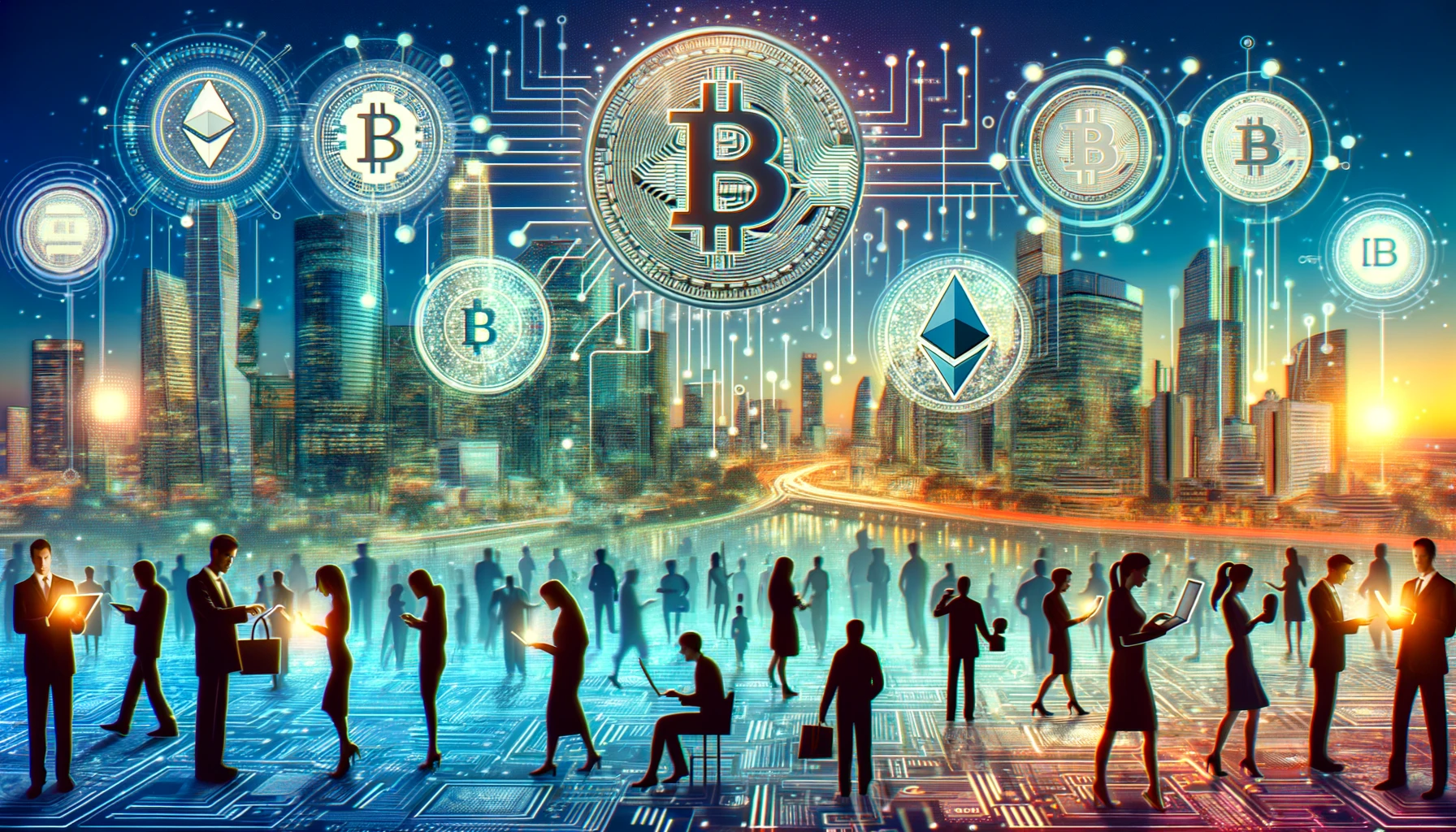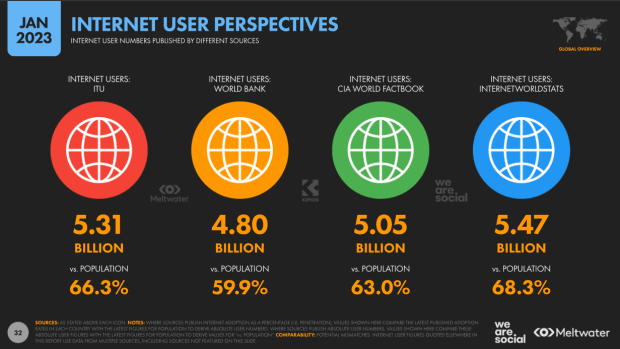Table of Contents

Source: Bingcrypto
Have you ever wanted to escape reality and enter a world where you can be whoever you want? Well, you’re in luck! Virtual reality technology has got you covered. With VR, you can be a superhero, a wizard, or even a giant fluffy unicorn (yes, that’s a thing). And the best part? You don’t even have to leave your couch! So, if you’re tired of your boring old life and want to spice things up, join us in the wonderful world of VR. We promise you won’t regret it (unless you forget to take breaks and end up feeling like you’re on a rollercoaster for hours).
What is Virtual Reality?
Virtual Reality (VR) is a computer-generated environment that simulates a user’s physical presence in a virtual or imaginary world. VR typically involves using a headset or other devices, such as gloves or full-body suits, to create a fully immersive experience that can be interactive and responsive to the user’s movements and actions.

In VR, the user can interact with the virtual environment as if it were real, enabling a wide range of experiences that might not be possible in the physical world. For example, VR can be used for gaming, training simulations, architectural design, and therapy.
VR technology typically involves high-resolution displays, motion sensors, and advanced computer graphics to create realistic 3D environments. It can also include haptic feedback, such as vibrations or pressure applied to the user’s body, to enhance the sense of immersion.
Overall, VR has the potential to revolutionize many industries and provide new and exciting ways for people to engage with digital content and experiences.
What is Virtual Reality?

Virtual Reality (VR) is a simulated experience that employs pose tracking and 3D near-eye displays to give the user an immersive feel of a virtual world. It is a computer-generated environment with scenes and objects that appear real, making the user feel as if they are actually inside the virtual world. VR technology allows users to explore and interact with their surroundings in a way that closely approximates reality.
VR headsets typically come with two screens, one for each eye, which display the 3D environment in front of the user. The headset also contains sensors that track head movement so that when the user looks around, the view changes accordingly. This creates an incredibly realistic experience for users, allowing them to explore virtual worlds like never before.
In addition to headsets, other devices, such as controllers and motion trackers, can enhance the VR experience by providing additional input options. With these tools, users can interact with their environment more naturally.
Virtual Reality has become an increasingly popular tool for many applications, from gaming and entertainment to education and training. As technology advances, VR will likely become even more widely used in many aspects of our lives.
Components of Virtual Reality
Virtual Reality (VR) is a simulated experience that can be similar to or completely different from the real world. It typically involves using computer technology to create a simulated environment that immerses the user in a three-dimensional world. While VR can be used for serious purposes such as training, education, and therapy, it can also be used for entertainment and humor. Some components of virtual reality that can be used to create humor include:
- Avatars: Avatars are digital representations of users in the virtual environment. They can be designed to look like anything, from real human beings to cartoon characters or animals. Using funny or absurd avatars can add a humorous element to VR experiences.
- Interactivity: VR experiences often allow users to interact with the environment and objects. This interactivity can create humorous scenarios, such as a game that aims to throw pies at virtual characters.
- Sound Effects: Adding silly or unexpected sound effects to VR experiences can enhance the humor. For example, a VR game where the user is a chef could include sound effects of funny noises when the user drops ingredients or burns a dish.
- Unexpected Situations: VR experiences can be designed to create unexpected and humorous situations. For example, a user could be walking through a peaceful forest only to have a giant cartoon character suddenly appear and start chasing them.
- Satire and Parody: VR experiences can also create satirical or parody versions of real-life situations. For example, a VR game where the user is a politician could be designed to mock the political process or the behavior of politicians.
Overall, the possibilities for humor in virtual reality are only limited by the imagination of the designers and developers creating the experiences.
Types of Virtual Reality
Virtual Reality (VR) is a computer-generated simulation of a three-dimensional environment that can be experienced through a headset or other similar devices. There are several types of virtual reality that can be categorized based on the level of immersion they offer and the type of technology used. Here are some of the most common types of virtual reality:
- Non-Immersive VR: Non-immersive VR uses a computer screen to display a virtual environment. The user interacts with the environment using a keyboard, mouse, or joystick. This type of VR is less immersive than other types, but it is more affordable and accessible.
- Semi-Immersive VR: Semi-immersive VR uses a large screen or multiple screens to display a virtual environment. The user typically wears a head-mounted display and uses a handheld controller to interact with the environment. This type of VR is more immersive than non-immersive VR, but less immersive than fully immersive VR.
- Fully Immersive VR: Fully immersive VR uses a head-mounted display and often has additional sensory devices like gloves or body suits that provide haptic feedback to simulate touch. This type of VR provides the most immersive experience and is often used for gaming, training simulations, and medical therapy.
- Web-Based VR: Web-based VR allows users to access virtual reality experiences through a web browser without requiring additional hardware or software. This type of VR is becoming more popular as it is more accessible and requires fewer resources than other types of VR.
- Augmented Reality (AR): Augmented reality is a type of virtual reality that overlays digital content onto the physical world. AR is often used in mobile applications and can be experienced through a smartphone or tablet camera.
- Mixed Reality (MR): Mixed reality combines elements of virtual and augmented reality to create a hybrid environment. This type of VR allows users to interact with digital objects in a physical space, and vice versa. MR is often used for industrial design, architecture, and engineering applications.
Components of Virtual Reality
Virtual reality (VR) is an immersive technology that uses computer-generated simulations to create a sensory experience that can simulate the real world or a completely imaginary one. The components of virtual reality can vary depending on the specific VR system or device, but some common components include:
- Head-mounted display (HMD): This is the primary component of a VR system, which is worn on the head like a helmet or goggles. It contains a small screen or screens that display the virtual environment directly in front of the user’s eyes.
- Tracking system: VR systems use a tracking system to detect the user’s movements and adjust the virtual environment accordingly. This can include sensors, cameras, or other devices that are placed around the room or on the HMD itself.
- Audio system: VR experiences often include spatial audio, which means that sounds are placed in specific locations within the virtual environment. This creates a more immersive experience for the user.
- Input devices: To interact with the virtual environment, users need input devices such as controllers, gloves, or other specialized devices. These input devices can track the user’s movements and translate them into actions within the virtual environment.
- Computer hardware: VR experiences require a powerful computer or gaming system to render the graphics and run the software. This can include a high-end graphics card, CPU, and plenty of RAM.
- Software: To create virtual environments, developers use specialized software tools that allow them to create 3D models, textures, and other assets. This software also handles the user input and tracking, as well as the rendering of the virtual environment in real-time.
Overall, virtual reality is a complex technology that requires a wide range of specialized components and software tools to create a convincing and immersive experience for the user.
Impact of Immersive Experiences on Users
Immersive experiences in the metaverse, created through technologies like virtual reality (VR), augmented reality (AR), and mixed reality (MR), have a significant impact on users. These experiences can provide a more engaging and realistic experience than traditional media, and have the potential to transform the way we learn, work, and interact with each other.

One of the most significant impacts of immersive experiences is their ability to create a sense of presence, making users feel like they are actually in the virtual world. This sense of presence can lead to a greater sense of immersion and engagement, which can help to keep users interested and invested in the virtual environment.
Immersive experiences can also provide users with new opportunities for learning and training. In the metaverse, users can learn and practice new skills in a safe and controlled environment, with the ability to repeat exercises until they have mastered them. This can be particularly valuable in fields such as medicine, engineering, and the military, where hands-on training is critical.
Furthermore, immersive experiences can provide users with new opportunities for entertainment and social interaction. In the metaverse, users can attend concerts, performances, and other events in a fully immersive environment. They can also interact with other users in virtual environments, creating new opportunities for socializing and making connections.
Finally, immersive experiences in the metaverse can have a significant impact on business and commerce. Virtual storefronts and showrooms can be used to showcase products and services, and virtual marketplaces can be used to buy and sell goods and services. Immersive advertising can create new and engaging ways for brands to connect with consumers, leading to greater brand loyalty and increased sales.
How to get started with VR
Virtual Reality (VR) is a revolutionary technology that has transformed the way we experience the digital world. With VR, you can enter a completely immersive environment and interact with virtual objects as if they were real. If you’re interested in exploring this exciting new medium, here’s how to get started with VR:
- Choose a VR headset: Several VR headsets are available on the market, each with its features and price points. Some popular options include the Oculus Quest 2, HTC Vive, and PlayStation VR. Choose a headset that fits your budget and requirements.
- Download VR content: Once you have your VR headset, you’ll need to download VR content. This can include games, simulations, educational experiences, and more. Many VR headsets have app stores, so you can easily find and download content.
- Set up your VR system: Setting up your VR system is usually straightforward, but following the instructions is essential. Ensure you have enough space to move around and that your headset is properly calibrated.
- Start exploring: With your VR headset, you can explore the virtual world. Use the controllers to interact with objects, move around, and navigate different environments.
- Share your experience: Finally, don’t forget to share your VR experience with others. Whether playing a game or exploring a new environment, VR can be a social experience. Share your headset with friends and family, or connect with other VR enthusiasts online.
Experience the future of technology with VR. Get started today and embark on an adventure like no other!
Exploring Spatial Computing in Virtual Reality
Spatial computing in virtual reality (VR) is an innovative technology that blends the digital and physical worlds, enabling users to engage with virtual objects more effectively and naturally. This cutting-edge technology can potentially transform various sectors, such as gaming, entertainment, education, healthcare, and more.
Understanding Spatial Computing
Spatial computing involves a collection of technologies that empower computers to comprehend and interact with the physical environment. These technologies encompass computer vision, machine learning, sensor fusion, and advanced user interfaces. By fusing these elements, spatial computing allows VR systems to recognize and respond to real-time user movements and actions.
Applications of Spatial Computing in VR
- Gaming and Entertainment: Spatial computing takes gaming to a new level by allowing players to interact with virtual environments more intuitively and engagingly. Users can reach out and grab objects, navigate complex terrains, and perform actions that feel more realistic than traditional gaming experiences.
- Education and Training: Spatial computing can revolutionize educational experiences by providing immersive, hands-on learning opportunities. VR simulations allow students and trainees to explore complex concepts, practice skills, and gain experience in safe, controlled environments.
- Healthcare: Spatial computing in VR can be used for medical training, patient rehabilitation, and therapy. Doctors can practice surgical procedures in virtual environments, while patients can experience physical therapy exercises designed to help them regain mobility and strength.
- Architecture and Design: Spatial computing allows architects and designers to create and explore virtual models of their projects, making it easier to identify potential design flaws and make adjustments before construction begins.
- Remote Collaboration: Spatial computing enables teams to work together in virtual environments, regardless of physical location. This can help reduce travel costs, increase efficiency, and promote better communication among team members.
Best VR Apps and Games
Virtual Reality (VR) technology is becoming increasingly popular, with various apps and games available to users. Here are some of the best VR apps and games currently available:
- Beat Saber: Beat Saber is an immersive rhythm experience you have never seen before! Enjoy tons of handcrafted levels and swing through the pulsing music beats, surrounded by a futuristic world.
- Half-Life: Alyx: Alyx is Valve’s flagship VR game, set in the iconic Half-Life universe. Players take on the role of Alyx Vance as they fight through a hostile alien world in search of a mysterious artifact that could save humanity from extinction.
- Superhot VR: Superhot VR is an intense first-person shooter game where time moves only when you move. Fight through waves of enemies using weapons, fists, and even thrown objects to survive!
- Google Earth VR: Google Earth VR lets you explore the world from totally new perspectives in virtual reality. Stroll the streets of Tokyo, soar over Yosemite, or teleport across the globe!
- Tilt Brush: Tilt Brush lets you paint in 3D space with virtual reality. Unleash your creativity with three-dimensional brush strokes, stars, light, and fire!
VR Chat: The Future of Social Interaction
The World of VR Chat
VR chat platforms are an emerging form of social interaction within the Metaverse, allowing users to communicate with one another through digital avatars in immersive virtual environments. These platforms often feature various environments and activities, enabling users to engage in conversations, play games, and attend events together.

Applications of VR
Virtual Reality (VR) has been around for decades, but it’s only recently that its applications have become more widely known and used. From gaming and entertainment to education and training, healthcare and medicine, real estate and architecture, sports and fitness, travel and tourism, and military and defense, VR is used in various industries.
First up, we have gaming and entertainment. This is probably the most well-known use of VR technology – think of games like Beat Saber, where you can immerse yourself in a virtual world and slash your way through obstacles with virtual lightsabers. But it’s not just limited to gaming – VR is also used to create immersive movies and experiences, like the VR adaptation of the award-winning short film “Henry.”
Next, we have education and training. VR technology is being used to create training simulations for surgeons and astronauts. It allows them to practice in a safe, controlled environment where they can make mistakes without real-world consequences. And it’s not just for professionals – VR is also being used to create educational experiences for students of all ages, like the VR tour of the International Space Station.
In healthcare and medicine, VR is used to treat various conditions, from post-traumatic stress disorder (PTSD) to chronic pain. By immersing patients in calming or distracting virtual environments, doctors can help them manage their symptoms and improve their overall well-being.
Real estate and architecture also use VR technology to create immersive experiences for potential buyers and clients. With VR, you can take a virtual tour of a property or building before it’s even built, giving you a much more realistic sense of what it will look like than just looking at blueprints or renderings.
Sports and fitness are also getting in on the VR game. With VR fitness games like Supernatural and BOXVR, you can get a full-body workout while feeling like a virtual gym or outdoor environment. And for sports fans, VR can provide an immersive experience that makes you feel right in the middle of the action.
Finally, the military and defense industries are using VR technology to train soldiers and pilots, as well as to develop and test new equipment. It allows them to simulate real-world scenarios without putting anyone in harm’s way.
Overall, VR technology has many applications and is constantly being developed for new uses. Who knows where it will take us next? Maybe we’ll all be living in virtual reality worlds before we know it! But for now, let’s enjoy the ride.
The Rise of Virtual Events in the VR
The rise of virtual events has been a game-changer for the event industry. With the advent of virtual reality (VR) technology, virtual events have become increasingly popular and accessible to more people. Virtual events are now being used in various ways, from corporate meetings and conferences to entertainment and leisure activities.
Virtual events offer many advantages over traditional in-person events. They can be held anywhere in the world without needing physical space or travel costs. They also provide a unique immersive experience that allows attendees to interact with each other and the environment in real-time. This makes them ideal for networking, learning, and entertainment purposes.
In addition to providing an immersive experience, virtual events offer a range of benefits for organizers. They can be organized quickly and cost-effectively without requiring extensive physical resources or personnel. Furthermore, they allow organizers to reach a wider audience than would be possible with an in-person event.
VR technology has made it possible for virtual events to become even more engaging and interactive. Attendees can now explore 3D environments, participate in interactive activities such as gaming or quizzes, or even join live discussions with speakers worldwide.
The potential applications of virtual events are virtually limitless – from educational seminars and workshops to corporate meetings and conferences – making them an invaluable tool for businesses looking to maximize their reach while minimizing costs.
As VR technology continues to evolve, so will the possibilities offered by virtual events – making them an increasingly attractive option for businesses looking to engage their customers globally.
Potential Benefits of Virtual Events
Virtual events offer several potential benefits over traditional in-person events, including:
- Accessibility: Virtual events can be attended by anyone with an internet connection, regardless of their location or physical abilities.
- Cost savings: Virtual events often have lower costs associated with travel, accommodations, and venue rentals, making them more affordable for organizers and attendees.
- Flexibility: Virtual events can be easily scaled, allowing organizers to accommodate larger audiences and adapt to changing circumstances.
- Environmental impact: By reducing the need for travel, virtual events can help decrease greenhouse gas emissions and other environmental impacts associated with large-scale gatherings.
Augmented Reality in VR
What is Augmented Reality?
Augmented reality (AR) is a technology that overlays digital content onto the user’s view of the real world, creating a blended experience that combines elements of both environments. AR experiences can be accessed using various devices, including smartphones, tablets, and dedicated AR headsets.

How Augmented Reality Relates to the Metaverse
Augmented Reality (AR) is a technology that overlays digital information onto the physical world, typically through a smartphone or tablet screen or wearable device like glasses or a headset. While the metaverse is generally thought of as a fully immersive virtual world, AR can also play a role in the metaverse in a few different ways:
- Blurring the Lines Between Physical and Virtual Worlds: AR can bridge the physical and virtual worlds of the metaverse by overlaying digital content on top of the physical environment. This can create a more seamless transition between the two worlds, making it easier for users to move between them.
- Enhancing Real-World Experiences: AR can enhance real-world experiences by providing additional context, information, or interactive elements. For example, AR could provide users with directions or information about a particular object or location or create interactive games or activities in real-world spaces.
- Creating Hybrid Virtual-Physical Environments: AR can also create hybrid virtual-physical environments that combine elements of both worlds. For example, an AR experience could allow users to interact with virtual objects overlaid in the physical environment or to see and communicate with other users in a virtual space while still being physically present in the real world.
- Enabling New Forms of Collaboration and Communication: AR can enable new forms of collaboration and communication in the metaverse by allowing users to see and interact with virtual content or other users in real-time while still physically present in the real world. This could have applications in remote work, education, or socializing.
Overall, while the metaverse is primarily considered a fully immersive virtual world, AR can play a valuable role in bridging the gap between the physical and virtual worlds, enhancing real-world experiences, creating hybrid virtual-physical environments, and enabling new forms.
Uses of Augmented Reality in the VR
Augmented reality (AR) and virtual reality (VR) are two different technologies that can be combined to create immersive experiences. AR overlays digital information on the user’s real-world view, while VR creates a completely artificial environment. When AR is integrated into VR systems, it can enhance the user experience by adding contextual information and improving the sense of presence.
Here are some uses of augmented reality in combination with virtual reality:
- Mixed Reality Gaming: Combining AR and VR can create mixed-reality gaming experiences that blend the physical and digital worlds. Players can interact with both real-world objects and virtual characters, enhancing the level of immersion and interactivity.
- Education and Training: Integrating AR into VR-based training programs can provide additional context and information to learners. For example, medical students can practice surgeries in a VR environment with AR overlays displaying vital information about the patient or specific instructions.
- Design and Prototyping: Architects, engineers, and product designers can use AR in VR environments to visualize and manipulate their designs in 3D space. This allows for real-time collaboration, quick iterations, and better decision-making.
- Retail and E-commerce: AR can be used in VR shopping experiences to provide customers with additional product information, such as reviews, price comparisons, or customization options, making the shopping experience more engaging and informative.
- Tourism and Exploration: Combining AR with VR can create immersive travel experiences that allow users to explore virtual environments while receiving real-time information about landmarks, historical sites, or local culture.
- Art and Creativity: AR can be integrated into VR art platforms to provide artists with additional tools and information, such as color palettes, brush settings, or tutorials, enhancing the creative process.
- Social Interaction: AR can enhance social VR experiences by providing users real-time information about other participants, such as their names, interests, or conversation topics, encouraging more engaging and meaningful interactions.
As AR and VR technologies advance, we can expect more innovative applications and experiences that combine the best of both worlds.
The Future of VR Gaming
Virtual Reality (VR) gaming has come a long way since its inception in the early 2000s. Now, with the advent of powerful gaming consoles and PCs, VR gaming has become more accessible than ever before. With the release of the PlayStation 5 and Sony PlayStation VR2, gamers can now experience immersive virtual reality worlds without breaking the bank.

The possibilities for VR gaming are seemingly endless. From exploring alien planets in No Man’s Sky to battling monsters in Resident Evil Village, there is something for everyone. Also, with new technologies like haptic feedback and motion tracking, players can feel as if they are truly part of the game world.
The future of VR gaming looks even brighter as developers continue to push the boundaries of what is possible. With advances in artificial intelligence and machine learning, games will become increasingly realistic and immersive. Additionally, developers are beginning to explore ways to use virtual reality for educational purposes, such as teaching history or science lessons through interactive experiences.
No matter your interests, there will surely be something for you regarding VR gaming. Whether you’re looking for an intense shooter or a relaxing exploration game, there is something out there that will fit your needs. So grab your headset and get ready to explore new worlds!
FAQs
What is virtual reality?
Virtual reality (VR) is a technology that creates a computer-generated simulation of a 3D environment, which can be interacted with using specialized equipment such as headsets, gloves, or sensors. It aims to immerse the user in a completely artificial world that can simulate real-life environments or imaginary settings.
What are the benefits of virtual reality?
Virtual reality offers several benefits, such as enabling users to experience immersive environments and situations that are impossible in the physical world. It can be used for education, training, therapy, entertainment, and gaming. VR can also help reduce costs, risks, and time associated with real-life experiences and promote empathy and social connections.
How does virtual reality work?
Virtual reality creates a computer-generated simulation of a 3D environment using specialized software and hardware. The user interacts with this environment through a VR headset that displays the virtual world and responds to the user’s movements and actions using sensors and controllers.
What do I need to experience virtual reality?
To experience virtual reality, you need a VR headset, a powerful computer or a compatible mobile device, and software that supports VR. Some VR systems also require additional sensors or controllers to track your movements and interactions in the virtual environment.
How do I get started with virtual reality?
Research and choose a VR system that fits your budget and needs to get started with virtual reality. You can also look for VR apps and games that interest you and download them onto your device. Follow the manufacturer’s instructions and recommendations for setup and usage.
What are the best virtual reality games?
Some popular virtual reality games include Beat Saber, Half-Life: Alyx, Superhot VR, Moss, and Job Simulator. However, the best VR games depend on your personal preferences and interests.
What are the best virtual reality apps?
Some popular VR apps include Tilt Brush, Google Earth VR, Bigscreen, Rec Room, and VRChat. However, the best VR apps depend on your personal preferences and interests.
What are the best virtual reality headsets?
Some popular VR headsets include the Oculus Quest 2, Valve Index, HTC Vive Pro, PlayStation VR, and Samsung Gear VR. However, the best VR headset depends on your budget, device compatibility, and usage requirements.
Conclusion
In conclusion, the Metaverse represents a new frontier in digital technology that has the potential to revolutionize the way we interact with digital content and each other. It combines aspects of virtual reality, augmented reality, spatial computing, virtual economies, and AI-powered assistants to create a shared virtual space that is open, dynamic, and interoperable. The Metaverse allows users to access immersive, interactive experiences that were once the stuff of science fiction, and offers businesses new opportunities to engage with customers in unique ways.












Leave a Reply